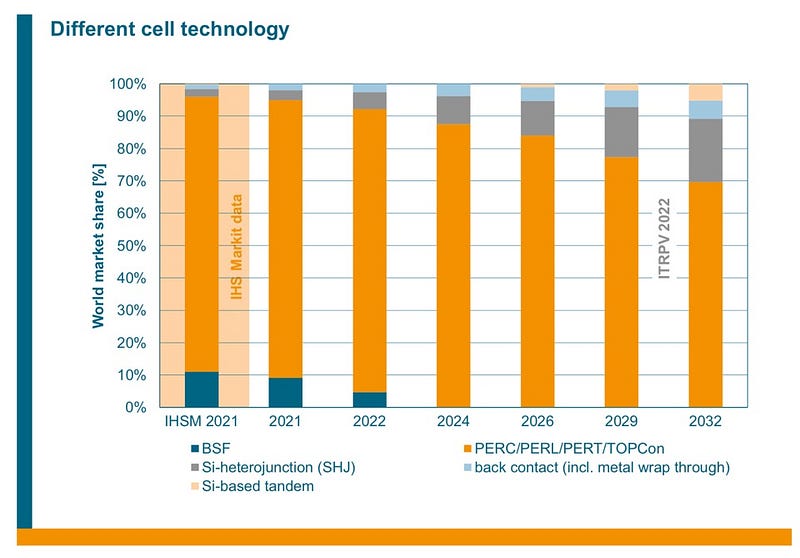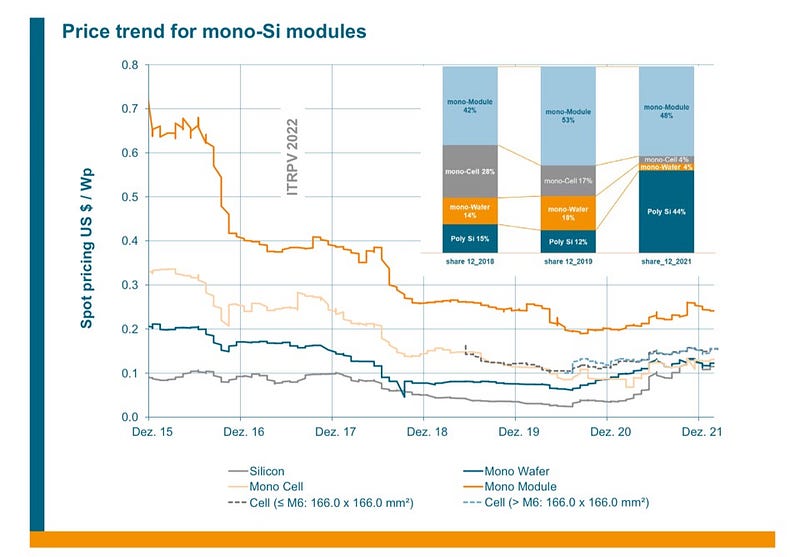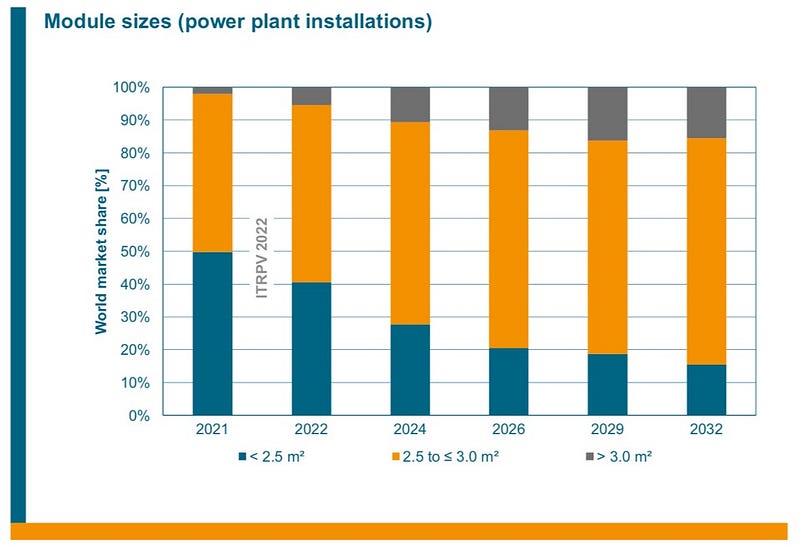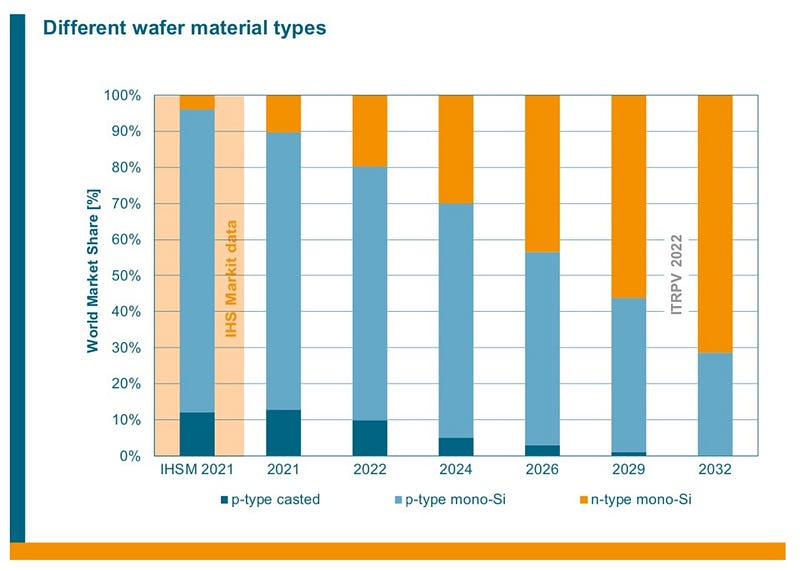Key Trends in Solar Industry: Technology and Economics Insights
Written on
Chapter 1: Current Landscape of Solar Technology
The German Mechanical Engineering Association (VDMA) has published its thirteenth edition of the International Technology Roadmap for Photovoltaic (ITRPV). This comprehensive report serves as an essential reference for understanding key technological advancements within the solar industry and offers updated insights into the economics surrounding solar energy.

According to the report, a total of 173 GW of photovoltaic capacity was added globally for energy production in 2021, pushing the total installed solar capacity to over 940 GW. The authors estimate that solar module shipments reached approximately 183 GW in the same year. Following decades of consistent price declines, a significant shift occurred in 2021, marked by a threefold rise in polysilicon prices, which impacted the costs throughout the entire production chain. Previously, the contributions of polysilicon and silicon wafers to the overall cost of photovoltaic modules had been decreasing; however, 2021 saw a notable increase in polysilicon's share of final product pricing, as illustrated in the accompanying graph:

Despite this upward trend, many industry experts anticipate that polysilicon prices will begin to decline soon, driven by the introduction of substantial new production capacities. As previously highlighted, there is a pronounced movement toward manufacturing larger silicon wafers and solar modules. The report suggests that wafer formats smaller than 161.0 mm² are likely to vanish within the next three years. Presently, the industry is focusing on the 166.02 mm² (M6), 182.02 mm² (M10), and 210.02 mm² (G12) formats. [For additional insights on wafer formats, refer to: Is the solar industry shifting to large-format silicon wafers?].
These larger wafer formats, which are expected to dominate the market in the near future, are also contributing to the increasing dimensions of solar modules. Currently, panels with a surface area of less than 1.8 m² represent 50% of the market share for rooftop installations, although this figure is projected to decline due to the unique challenges of manual labor on rooftops. In the ground-mounted power sector, 60% of installed modules exceed 2.5 m², with this share anticipated to rise to over 85% by 2032. Furthermore, photovoltaic panels larger than 3.0 m² are expected to occupy approximately 16% of the market.

The market for monocrystalline silicon wafers (mono-Si) is projected to reach around 90% in 2022, with expectations for further growth. Additionally, the market share of n-type wafers is set to increase from 20% to approximately 70% within the next decade. This outlook represents a more optimistic view compared to earlier ITRPV predictions. While PERC technology is expected to maintain its dominance in the cell technology space over the next ten years, its market share will gradually decrease from 85% in 2022 to 70% by 2032. Silicon heterostructure solar cell (HJT) technology is predicted to capture a market share of 19%.

Looking toward the future, the report outlines a range of scenarios for the growth of solar energy. In the most conservative estimate, installed capacity could reach 14.5 TW by 2050, generating approximately 23.5 thousand terawatt-hours annually, which would account for 33% of the anticipated global electricity output.
I would like to express my gratitude to Dan Kreibich and the SQUAKE team for their invaluable assistance.
Chapter 2: Economic Analysis of the Solar Industry
This section delves into the financial aspects of the solar industry, analyzing market dynamics and investment trends.
The first video titled "Economic Analysis of the Solar Industry" provides insights into financial trends and the overall economic landscape of solar energy.
Chapter 3: Global Market Outlook for Solar Energy 2024-2028
In this chapter, we explore future projections for the solar market, focusing on expected growth and technological advancements.
The second video, "Global Market Outlook for Solar Energy 2024-2028," discusses anticipated developments and market trends in the solar sector over the next few years.